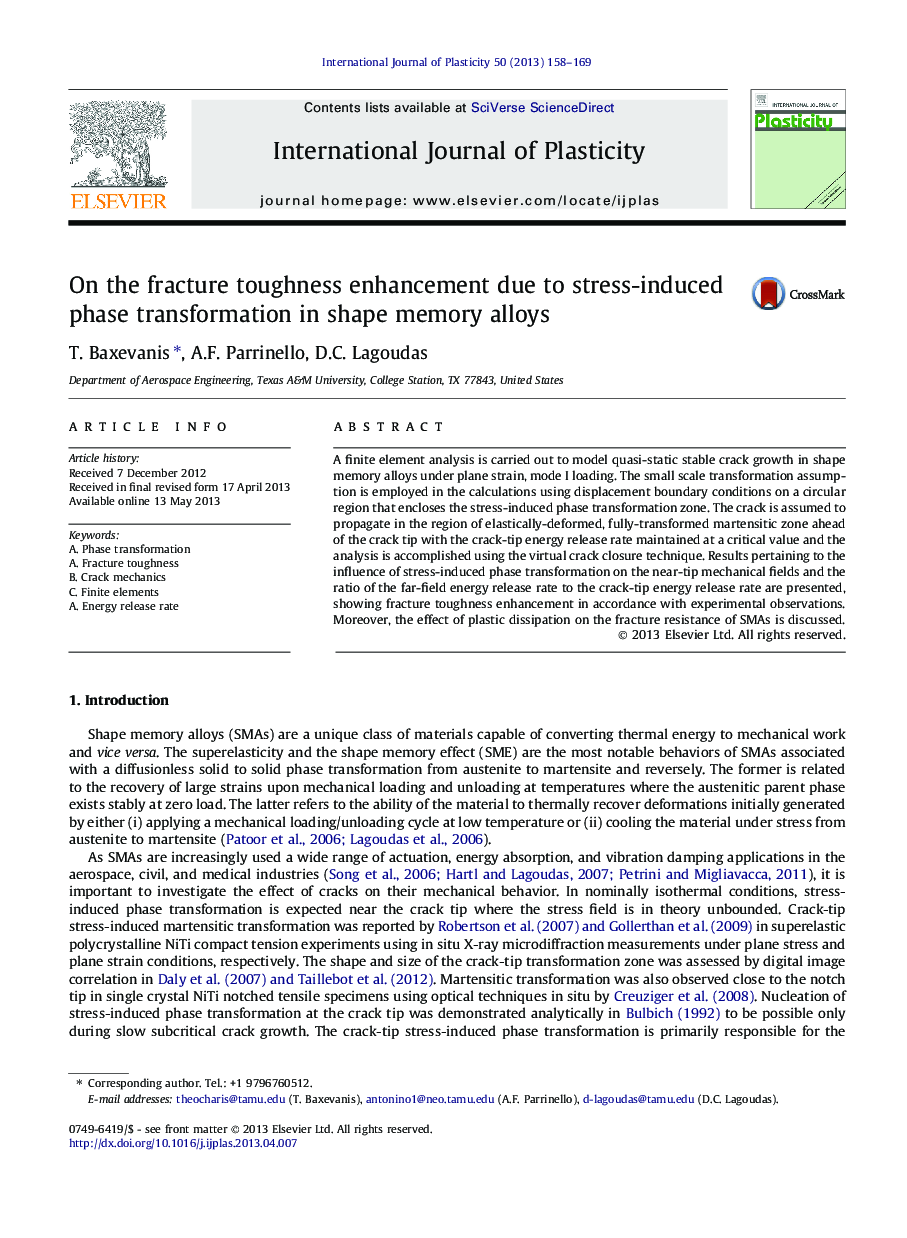| Article ID | Journal | Published Year | Pages | File Type |
|---|---|---|---|---|
| 786213 | International Journal of Plasticity | 2013 | 12 Pages |
•We model quasi-static stable crack growth in shape memory alloys (SMAs) under plane strain, mode I loading.•We examine the effect of stress-induced phase transformation on the fracture toughness behavior of SMAs.•We examine the sensitivity of the fracture resistance of SMAs to the variation of key thermomechanical parameters.•We discuss the effect of plastic dissipation on the fracture resistance of SMAs.
A finite element analysis is carried out to model quasi-static stable crack growth in shape memory alloys under plane strain, mode I loading. The small scale transformation assumption is employed in the calculations using displacement boundary conditions on a circular region that encloses the stress-induced phase transformation zone. The crack is assumed to propagate in the region of elastically-deformed, fully-transformed martensitic zone ahead of the crack tip with the crack-tip energy release rate maintained at a critical value and the analysis is accomplished using the virtual crack closure technique. Results pertaining to the influence of stress-induced phase transformation on the near-tip mechanical fields and the ratio of the far-field energy release rate to the crack-tip energy release rate are presented, showing fracture toughness enhancement in accordance with experimental observations. Moreover, the effect of plastic dissipation on the fracture resistance of SMAs is discussed.
